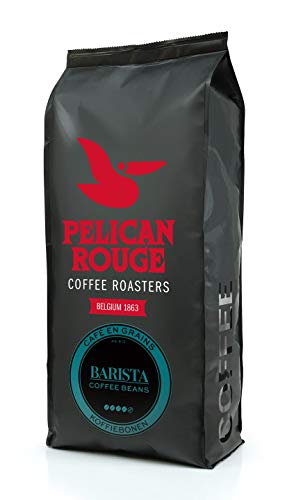Starbucks Coffee Beans 1kg
Before Peppermint Mocha and red holiday cups before the advent of red holiday cups and Peppermint Mocha Starbucks was just a cozy cafe in a rainy Seattle. The Starbucks founders were focused on selling whole beans of coffee, but they didn't see the potential of espresso drinks.
That changed when Schultz stepped in. He was determined to demonstrate his roasting and blending abilities.
Origin
Starbucks coffee beans go through a long, winding journey before they reach your cup. The majority of the world's coffee is produced in the Coffee Belt, which stretches around the globe between the Tropics of Cancer and Capricorn. The flavor of coffee beans is influenced by the climate, soil and culture of the region. Starbucks sources its coffee beans from more than 30 countries.
The majority of Starbucks coffees are sourced from three key regions: Latin America, Africa, and Asia-Pacific. These regions are famous for their full-flavor, balance of acidity and weight. Starbucks also procures coffee from St. Helena in the South Atlantic Ocean, a volcanic tropical island paradise.
Starbucks coffee beans are roasted to perfection for an incredibly smooth and delicious taste. The coffee beans are crushed into a fine powder and ready for brewing. The powder is then mixed with water and put into the cup to make a delicious cup. The result is a cup full of flavor and energy.
While most Starbucks coffees are blends of different beans, there are many varieties of single-origin coffees available at the stores of the chain. The company's single-origin coffees offer an array of flavors, including sweet and nutty and fruity, as well as chocolatey. Certain single-origin beans are certified organic.
Although Starbucks's beans are sourced from all across the globe, they have to meet certain requirements to be considered specialty coffee. Specialty coffee was first used in the 1980s when cafes and roasters began experimenting with lighter roasting techniques and manual methods. Starbucks hasn't started sourcing their coffee with these standards in mind, but it has since adopted a few of them.
In addition, to ensure that its beans are grown in a responsible way, Starbucks works to improve the lives of those who grow their coffee. It offers its coffee farmers a higher rate than the market price and allows them to invest in their communities. It also promotes sustainability and works to reduce waste. This has led to the creation of new methods for growing coffee and practices that safeguard the environment.

Roast
Starbucks buys its beans in large quantities and roasts them in huge quantities. The roasting process can take between 10 and 15 minutes. The result is that the beans are dark and roasted. Dark roasted beans possess an intense flavor, and a full body. The beans are ground and then shipped to supermarkets and stores in the form coffee grind. The coffee that is ground is bitter and is not ideal to make the perfect cup. This is why a lot of people add a lot of sugar, cream, flavorings, milk whipping cream, and other ingredients to their cup of coffee. This will not cover the bitterness of the coffee, but it can make the drink more appealing.
When the beans are placed into the roaster they begin to steam due their internal moisture. The "first crack" is a distinct sound that signals the start of the roasting process. At this point, the sugars begin to caramelize and bound-up water escapes. At the same time the bean's structure breaks down and oils migrate outward from their little pockets. The end of this stage is the time at which the majority of coffees are considered city roasts.
The beans that have been roasted are cooled and separated from any stones or other impurities which may have escaped from the roaster. They are then examined by hand before being packed to be sold. Some beans have a dark spot, which is known as a quaker. These beans didn't change color and tasted burnt. This is a common phenomenon, but it does not suggest that the coffee is not good.
The beans are often roast in small batches that can be as small as 20 pounds. These are called "micro lots". This is because each coffee will be roasted according to specifications developed by the Starbucks team of coffee masters. 1kg coffee beans price uk of experts in coffee creates distinctive profiles that are utilized by all Starbucks(r) roasting facilities across the globe. These profiles help to ensure that every cup of coffee brewed will be consistent, with a specific level of body and flavour.
Flavor
Starbucks buys their beans from the farms they originate in to aid in improving quality and ensure ethical sourcing. For every one pound of coffee beans sold, Starbucks plant a tree. The beans themselves aren't branded to indicate the origins of the beans however some of the blends do - Veranda is from Sumatra, Komodo Dragon from Indonesian, and Anniversary is a mix of centeral american and african beans. The flavor profile of these beans is unique and they create a smooth velvety cup with a delicate balance between sweetness and smoothness. Each sip unveils a symphony of flavours, leaving a lingering pleasant taste on your palate.
Weight
The weight of Starbucks coffee beans 1kg depends on the blend. A Starbucks House Blend, for instance, weighs 14 oz per pound. Walmart's pound of Espresso Roast beans weighs 16 oz. This translates into an increase of 67% at Starbucks in comparison to Wal-Mart.
Starbucks' Pike Place Roast is named after the iconic Seattle marketplace. Its medium-light roast gives balance, sweetness and smoothness in each cup. Blended using beans from Latin America, this blend is perfect for Americano and espresso. This delicious blend is packaged in a FlavorLock packaging to preserve and protect the flavor. This is Starbucks' timeless signature coffee. This is a great option for those who love coffee! Made of 100% Arabica beans. A great gift idea for all Starbucks customers.
